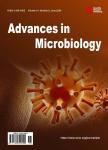Evidence of Synergistic Activity of Medicinal Plant Extracts against Neuraminidase Inhibitor Resistant Strains of Influenza Viruses
Evidence of Synergistic Activity of Medicinal Plant Extracts against Neuraminidase Inhibitor Resistant Strains of Influenza Viruses作者机构:Department of Chemistry and Biotechnology Faculty of Science Engineering and Technology Swinburne University of Technology Hawthorn Australia Sarawak Biodiversity Centre Kuching Malaysia
出 版 物:《Advances in Microbiology》 (微生物学(英文))
年 卷 期:2014年第4卷第16期
页 面:1260-1277页
学科分类:1002[医学-临床医学] 100214[医学-肿瘤学] 10[医学]
主 题:Influenza Antivirals Medicinal Plant Extracts Hemagglutination Inhibition Neuraminidase Inhibition Sialic Acid-Like RDE
摘 要:The frequent emergence of drug resistant influenza viral strains emphasizes the urgent and continual need to develop new antiviral drugs. Given the encouraging findings of previous studies on antiviral compounds from plant sources, this study focused on medicinal plants from Borneo that were traditionally used to treat symptoms of influenza infection. Following the promising results of earlier investigations, four plant extracts that demonstrated multiple modes of viral inhibition were studied against wild-type and neuraminidase (NA) inhibitor-resistant strains of Types A and B influenza viruses. The extracts exhibited more pronounced activities against the wild-type viruses than the NA inhibitor-resistant strains. Variations in the antiviral potential of the extracts collected from different parts of the same plant were also evidenced in the in vitro micro-inhibition assays. Even though all plant extracts affected NA activity of all viruses, only two extracts demonstrated hemagglutination inhibitory (HI) activities against Type A pandemic H1N1 and Type B viruses. Furthermore, Receptor Destroying Enzyme (RDE) treatments of extracts exhibiting HI activities indicated the presence of sialic acid (SA)-like component(s) that may be responsible for HI activity. Since the antiviral potential of extracts was not completely suppressed by RDE, the possibility of non SA-like antiviral components cannot be ruled out. Therefore, synergistic activity between SA-like and non SA-like components contained in the plant extracts may be responsible for the demonstrated antiviral potential. The results also indicated the presence of non SA-like components that may act against other viral proteins apart from hemagglutinin (HA) and NA. Hence, this study supports the presence of multiple antiviral components that act against different viral proteins or interfere with different stages of viral replication. Our results suggest that these plant extracts have the potential to be developed as



